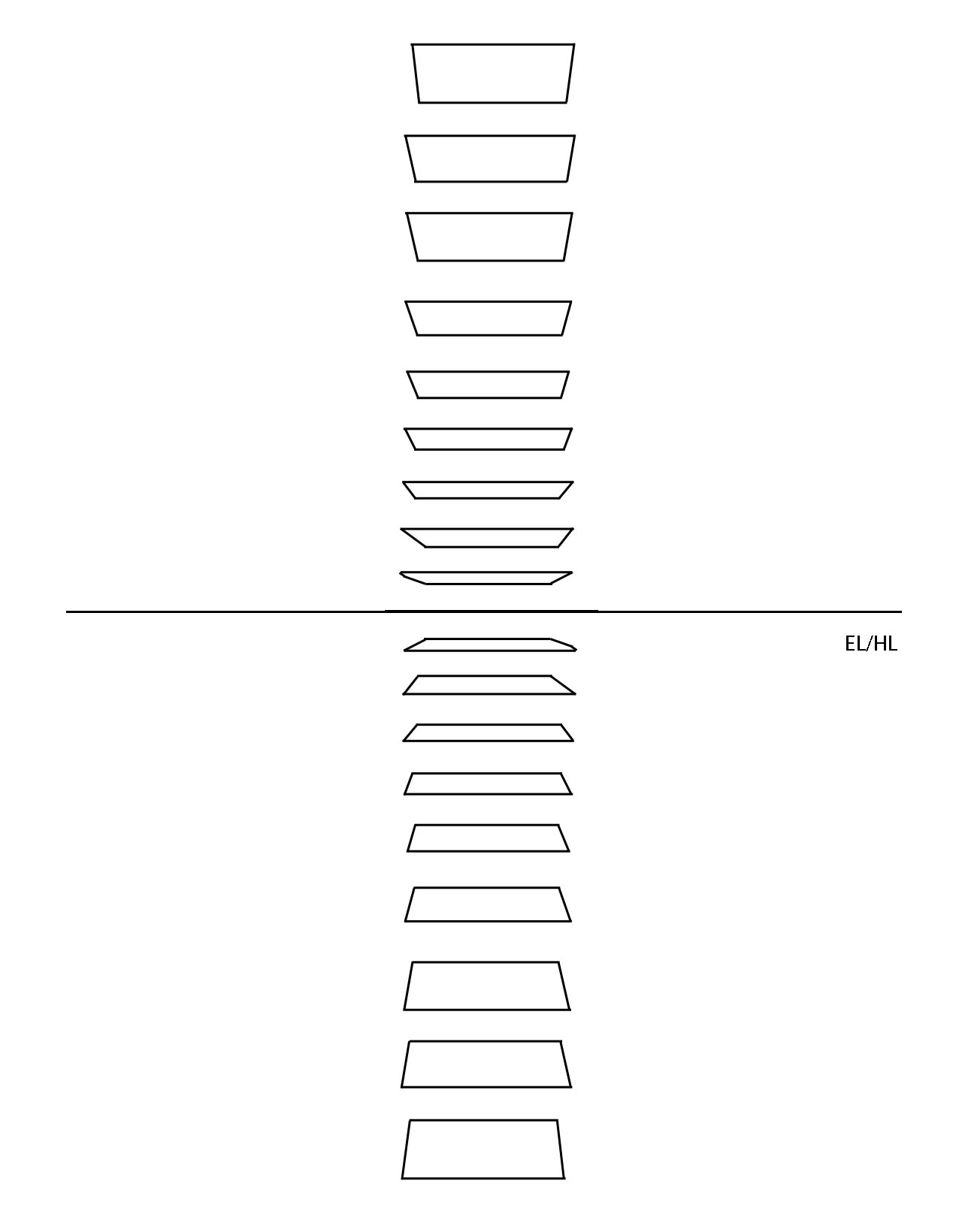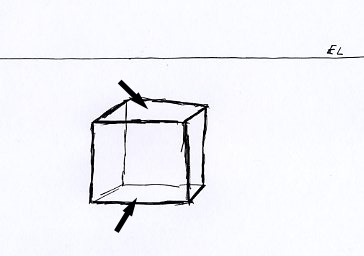Geometric Shapes: Planes
Planes are flat (two dimensional) surfaces bounded by edges or lines. For example, a cube has six equal sides (planes). In this section, we refer to planes as foreshortened squares, rectangles, and circles.
Note: Planes visually change their appearance with the addition of Converging Lines and Pitch.
The amount of pitch (the degree of inclination or angle) of a plane is controlled precisely by the eye level and line of sight. The greater the pitch, the narrower the visible area.
Independent of eye level or line of sight, objects appear to decrease in size in the distance. However, even though the object appears smaller, the amount of pitch in a plane increases in the distance.
To restate: Pitch decreases as it moves away from of the viewer’s eye level and line of sight, and increases as it moves closer to eye level and line of sight. Scale/size decreases as it moves away from the viewer and increases as it moves closer to the viewer, independent of eye level or line sight.
Remember: the greater the pitch, the narrower the visible area.
Planes
The pitches of the planes increase as they move closer to (left or right) from the line of sight. They also increase as they move closer to (above or below) the eye level. In order to create an illusion of representational proportion, that pitch must be accurately observed and then drawn.
Errors with Planes
The most common error is reversing the pitch of the parallel planes on a cube, box or cylinder.


